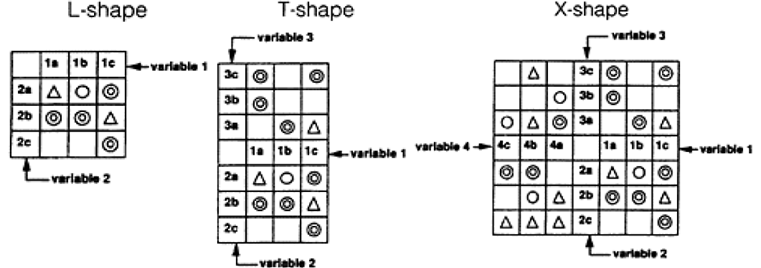Matrix Diagrams
Introduction:
The matrix diagram displays the relationship between two or more qualitative variables. There are a number of different forms of matrix diagram.
Types of the matrix diagrams:

The matrix diagram is a technique which is used for displaying the relationship between two or more qualitative variables. It is the direct counterpart of graphs in two or more dimensions showing the relationship between quantitative variables.
There are many uses of matrix diagrams in daily business life. Below are shown some of the more typical:
- ORGANIZATIONAL
1. Initiative diagrams
2. Responsibility diagrams
3. Educational planning
• PRODUCT DEVELOPMENT
1. Quality function deployment
•MARKETING
1. Media planning
2. Planning of a parameter mix
- The L-shaped matrix is the most common. It shows the relationship between two variables and is the direct basis for, e.g. the well-known house of quality from Quality Function Deployment.
- The T-shaped matrix is just two L-shaped matrices on top of each other. The idea of stacking the matrices follows from the fact that, in this way, it will be possible to make inductions between two of the variables via the third.
- This is also the idea of the X-shaped matrix. In this matrix the relationship between three variables is directly described and the relationship to the fourth is then found by induction.
Procedure of constructing a matrix:
The procedure for constructing a matrix may be as follows:
1. Define the problem and choose the team to solve it.
2. Choose the variables to enter the solution.
3. Decide upon the relevant matrix format (L, T, X).
4. Choose symbols for the relationships.
5. Fill in the matrix.